Master of Science Program Telematics Applications in Education and Training (TAET)
An analysis research of the TeleTOP system performance on six different learning environments
Chapter 1. Introduction
Chapter 2. Experiment Design
Chapter 3. Results
Chapter 4. Evaluation
Chapter 5. Conclusion and Recommendations
|
Adel M. Agina
Graduation Committee:
Prof. dr. J. Moonen, supervisor
Dr. ir. R. Min, project leader
Enschede/ The Nederlands
University of Twente
Faculty of Behavioral Science (GW)
(Formerly: Faculty of Educational Science and Technology)
October 2003
=== We still are working on the lay out of this file ===
Chapter 1. Problem Introduction and General Context
The aim of this project intended to cover two main meanings. The first one is to explore the cause of a technical problem that relating to run the simulation and animation packages in TeleTOP system environment. This technical problem will be clarified by achieving different tests on TeleTOP system to explore and analysis the reasons behind that.
The second meaning of this research is to find out the influence of TeleTOP on the package content and the influence of the package content on TeleTOP as well as to determine which one of them is affected by the other based on practical tests to give the obtained results cohesive and acceptable credibility.
During working on those two meanings mentioned above, some other interested issues have been explored such as the 4C Model, which has been used to measure the efficiency of TeleTOP with regards to the package content process as well as to determine the educational problem behind.
1.1 The general context
For years, those of us who use core and complementary technologies in education and training have been promising that technology, generally, would revolutionize the way people learn. And for years, in all innocence, we've been kidding ourselves. Nowadays, however, seems different.
The arrival of the World Wide Web signals the beginning of some fundamental changes in how teaching, training, and self-directed learning will occur at all ages and stages of life.
The World Wide Web (WWW) is an Internet service that allows you to combine all types of content when creating interactive documents. Hypertext links, called hyperlinks, allow users to surf from one document, or page, to another quickly and easily by clicking on a link embedded in the text or graphics. The various software packages available for displaying WWW pages, called browsers, allow users to explore sites and gain access to available information. The Web has different meanings to its many users. It is used as a marketplace, a school, a library, a publishing house, an art gallery, with new uses constantly emerging.
1.2 Flexible teaching and learning
To many people, learning is something that happens in a classroom, starting at the age of five and finishing somewhere between the ages of 16 and 21. But millions of others have already discovered that learning can happen at any time, in any place: on the bus, in the office, on the night shift or in any other place. It is no longer necessary to be in a classroom in front of a teacher to be in a 'place of learning'. Traditional ideas about education are undergoing a metamorphosis as the concepts of open learning, lifelong learning and distance learning gain familiarity.
Although the terms Distance Learning and Open Learning are often used interchangeably, there are important differences. Open learning is an umbrella term for any scheme of education or training that seeks systematically to remove barriers to learning, whether they are concerned with age, time, place or space. With open learning, individuals take responsibility for what they learn, how they learn, where they learn, how quickly they learn, who helps them and when they have their learning assessed.
Distance learning, on the other hand, is one particular form of open learning in which instructors and learners are separated by geographical distance. This is sometimes called a home-study or correspondence course. But many modes of communication are used for distance learning, not just postal correspondence. If you stop to think about it, most of us use distance learning techniques in some form in our daily lives: we read books and newspapers, watch programmes on television and request information over the telephone. These are all learning experiences which 'educate' in the broadest sense.
Flexible teaching seeks to provide educational programs in ways that meet the changing needs of learners. Programs are designed to cater for a more diverse range of learners, learning styles, needs and interests than are normally catered for through conventional study programs. Flexible teaching, in the context of higher education, is concerned with the provision of a learning environment for students that incorporates a variety of access opportunities as well as a variety of learning modes. The learning opportunities of students are optimised by the expert shaping of learning environments within a particular course or program of study. Learners' access to and control over their learning environment increases, as they are able to select their most appropriate form of access and/or learning mode in relation to a particular course of study. Flexible teaching includes conventional teaching practices and learning modes as well as alternatives and options provided by various media including, but not exclusive to, the recent developments in communications and information technology.
1.3 The TeleTOP system
TeleTOP system was designed and built at the faculty of Educational Science and Technology (currently, faculty of Behavioral Science) in 1997 as an answer to the development of a new educational concept (Extending the Good Teacher, The Active Student) that brings new learning concepts to all students regardless of time and location. To make it easier for instructors to use TeleTOP system, the TeleTOP system Decision Support Tool was built with which instructors can easily set up their course environments.

Figure 1. The TeleTOP system
TeleTOP system is a unique Web-based Course Management System, is the result of this effort. It was first used in 1997 at the faculty of Educational Science and Technology to support teachers organizing their lessons. As the experiences were very good, the executive board decided in 1999 to implement TeleTOP system also in the other faculties of the university. TeleTOP system soon caught interest from users outside the university and is currently used in different institutions such as secondary schools, universities and several companies
1.3.1 TeleTOP and Instructors
With TeleTOP system, instructors can easily set up a course environment for their own course. The site provides logical and clear access to material, organization and communication tools. The threshold for starters is low - after only a short introduction (1 á 2 hours), every instructor is able to operate TeleTOP®. As instructors differ in their way of teaching, TeleTOP® can be used differently. As one will choose for extensive and complex use, another one will facilitate his course with only a few options. It's up to the instructor!
1.3.2 TeleTOP and Students
Being acquainted with one course within TeleTOP system, students can easily get around in all the others. The simplicity of TeleTOP system makes it normally unnecessary to train students.
1.3.3 TeleTOP and ICT
TeleTOP system is a web-based server platform that supports all kinds of education. From lectures, to tutorials, practices, problem based learning to full distance mode courses. ICT was also used in education prior to 1997 at the Faculty of Educational Science and Technology. Teachers acted as pioneers in the use of technology in their teaching as well their research. For example: the course "On-Line Learning" in March 1994 was one of the first courses in the world to use Web technology to extend the learning experiences of a traditional campus-based course.
1.3.4 TeleTOP and Flexibility
Instructors can easily choose and change the set of features at any time, even when the course is running. Add a discussion, remove a Poll, allow students to make contributions as a part of an assignment.
1.3.5 Overview of TeleTOP features
The features of TeleTOP system are divided into four categories: organization, communication, resources and collaboration: the core activities of every educational plan. The following is an overview of the main TeleTOP system features:
- News
Such as information about the availability of instructors, feedback on assignments, or schedule changes. It's possible to let students respond on news items or to set an expired date!
-
Course Info
Contains Information about the contents, objectives, organization and instructors of the course. Use the standard set of items or your own.
- The Roster
Indicates which activities are planned, which preparations or assignments will be expected from the student at which time. The Roster has important built-in facilities for students to submit assignments electronically and afterwards to look at the feedback the instructor has given. It also offers instructors an overview of the submitted assignments, to read them and to give feedback.
Most innovative about the Roster is its flexibility. The instructor can easily add rows, make different rows available for different groups of students, adapt the columns, and integrate resources (like shortcuts) from the entire site.
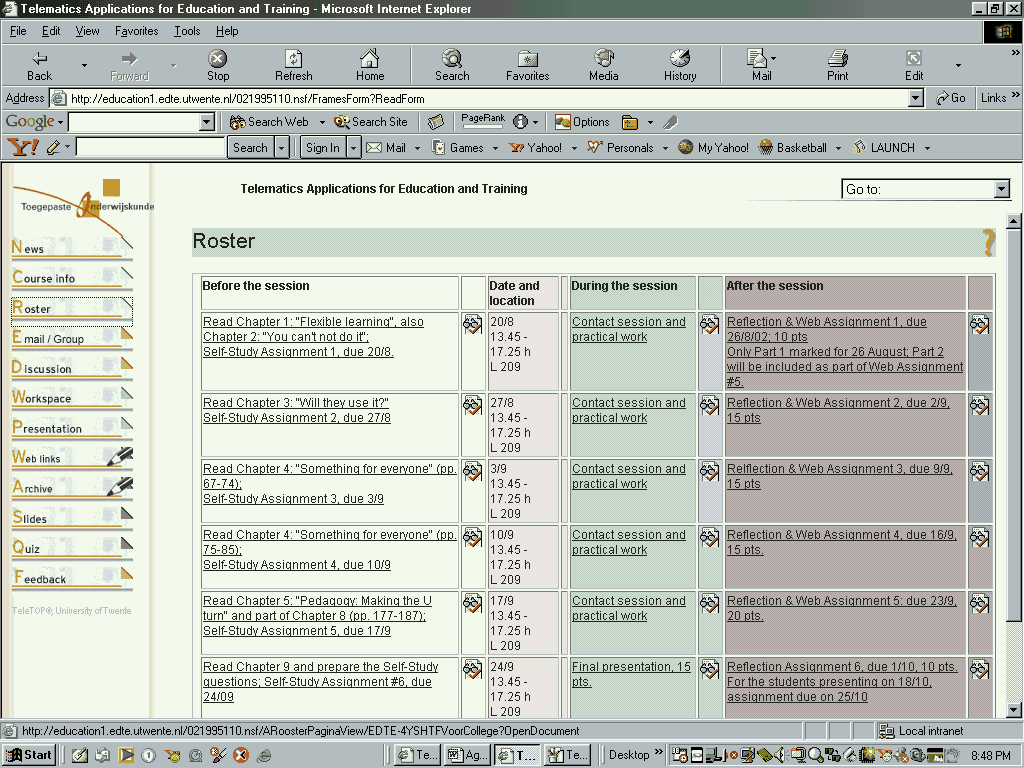
Figure 2. The TeleTOP Roster
xxx
- Discussion section
Here students can discuss scientific issues. Discussion can take place in different areas (Workspace, News, stand alone), separated from each other.
- Shared Workspace
Where students can work as a group, post files and communicate. If you think it's important that students follow the developments in each other's workspace, permit non-members of a workspace to read. It's up to you and depending on your didactics!
- Question & Answer section
Where students can place questions that the instructors can answer. Questions can be posted anonymously.
- Setup
Use the Setup to create your own look and feel for the course. Select different images, logos or even URLs! You can copy materials from other courses or archive your course.
1.4 Problem description
During my study in the course of simulation and animation in education, my mentor and I were explored that TeleTOP has a problem with some kind of content structure. TeleTOP has a strange behaviour to run some packages in simulation and animation especially when we use some class files from both libraries SimLib and WebLib. SimLib and WebLib are libraries created by Rik Min and his colleagues to accelerate preparing packages in simulation and animation technologies. More specifically, sometimes TeleTOP is unable to run the packages although those packages are not complex in both simulation and animation while in other cases TeleTOP is able to run even the complex packages.
The interesting matter in this problem that TeleTOP has this strange behaviour also with traditional web pages, which is a common problem among students. For instance, during the first course of TAET program, which is titled Telematics Applications in Education and Training some students were complained that their web pages are work perfectly out of TeleTOP environment while they do not work inside TeleTOP environment because images, for instance, do not appear at all.
1.5 Problem analysis
Despite, the first aim of this research is to solve the problem that related to running packages in simulation and animation technologies using SimLib and WebLib, the aim was automatically changed to analysis and clarifies the problem of TeleTOP with different type of packages.
In fact, at the beginning of this research I could not able to determine which is affected by the other TeleTOP or packages since the cause of this problem needs deeply analysis and definitely preparing several prototypes with different type of content.
During preparation face to choose the proper packages to be tested in the TeleTOP environment, fortunately some of TAET students were asked for some help related with their Web pages. The problem they encountered was related to run their Web pages inside the TeleTOP environment where some of their content like pictures did not appear at the same time the web page was correctly running out of the TeleTOP environment. The cause of this problem is intimately related to the behaviour of the FrontPage application, which is the appropriate software for all the beginners of Web page designing. When you insert such item (photo, picture, etc) to the current page you work in, the FrontPage will immediately creates a subdirectory and put a copy of that item in that subdirectory with random name and also automatically creates the link to that item.
In fact, that problem was changed the aim of this research to be widely to include all types of content without limitation and not only simulation and animation with SimLib and WebLib because obviously there is something ambiguous and obscure behind that cause that needs to be explored and clarified. In addition, this problem also implied that the problem is not only related to specific type of content while itís related with any content.
Accordingly, the questions of this research could be considered in finding out which is affected by the other TeleTOP system or content?
Chapter 2. Experiment design
In fact, the word Ďdesigní is somewhat not suitable to be used here because of many reasons. First, the SimLib and WebLib are libraries published by Rik Min to be used in simulation and animation in educational purposes. Second, one of the prototypes is the final project of some other students in the course of simulation technology in education.
Nevertheless, the preparation phase, usually, is the most difficult part when such experiment has decided to be implemented. Choosing the appropriate prototypes is not a problem but it costs time and sometimes needs to achieve a number of small tests to choose the suitable one.
Fortunately, my final projects in both courses simulation and animation as well as another project by other classmates were ready to be used as good prototypes especially they have different type of content and all of them are using SimLib and WebLib.
Accordingly, the word
design is used here just to describe the efforts to prepare the experiments of this research during the preparation phase.
2.1 Simple animation (Tank animator) package
The Tank-Animator, in fact, is simple animation application although itís content contains various types of content as shown in figure 3.
2.1.1 Characteristics of Tank-Animator package
Java is used to prepare the applets, which are the objects from WebLib. JavaScript is used to prepare the push button (Fill in Tank/ Start Time) and the mathematical model to control the animation, GIF and JPG pictures are used to clarify the form of the tank and ultimately HTML is used to hold the entire content to enable the browser display the package.
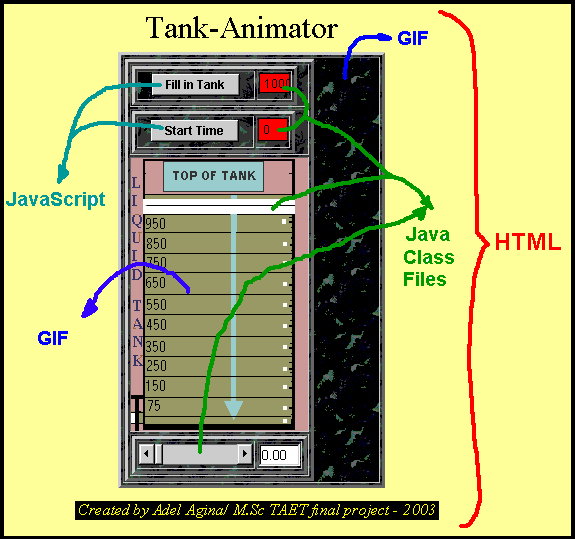
Figure 3. The Tank-Animator
2.1.2 Content construction of the Tank-Animator package
The default construction consists only one dimension (directory) where all the objects are placed at the same level (folder). Figure 4 clarifies the content construction OUT of the TeleTOP environment (on desktop) while figure 5 clarifies the content construction INSIDE TeleTOP environment. The Tank-Animator package contains the following main files:
- HTML:
Tank-Animator.html is the main file of the package including JavaScript math model.
- Class files:
Animatie.class, Slider.class and Teller.class.
- Other files: GIF pictures are used to create better user interface (see figure 3).
- Library: The package has no library (special folder that contains specific type of content) and all the content files are placed in only one folder (one layer).
Figure 4 shows the content of the Tank-Animator package on the client desktop while figure 5 shows its content on the TeleTOP environment (server).
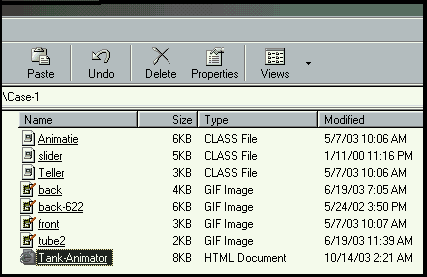
Figure 4. File structure of the Tank-Animator on client desktop
The content transferring was very quick without difficulty because the package has no much files.

Figure 5. File structure of the Tank-Animator on TeleTOP server
The content construction has the same structure out and inside TeleTOP environment where all the objects are placed at the same directory. Therefore, the content transferring was very quick and easy because the content has no much files.
2.1.3 Performance of TeleTOP system on the Tank Animator package
TeleTOP is able to run the Tank-Animator and there are no difficulties when transferring the content from OUT to INSIDE TeleTOP environment. The content has the same file structure in both environments as shown in the figures 4 and 5.
2.2 Complex animation (The Enzyme Kinetics with WebLib library - One dimension objects) package
The Enzyme Kinetics animator is a complex with regard to preparing the applets (class files) or even preparing the interface. The difficulty, in fact, is found behind the animation control of all tankerí pointer level. The animation of each tank pointer is intimately depending on the previous one
2.2.1 Characteristics of Enzyme Kinetics Animator package
Java is used to prepare the applets, which are the objects from WebLib. JavaScript is used to prepare the push button (Fill in Tank/ Start Time) and the mathematical model to control the animation, GIF and JPG pictures are used to clarify the form of the tank and ultimately HTML is used to hold the entire content to enable the browser display the application.
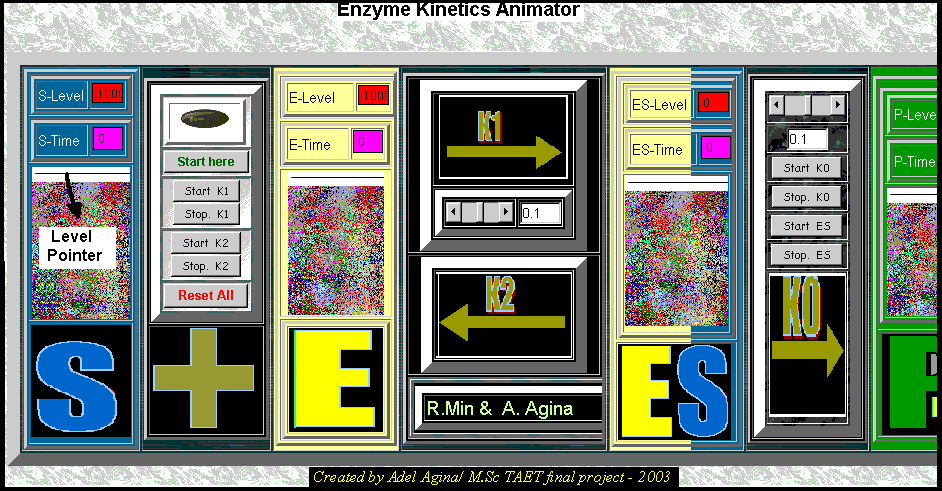
Figure 6. The Enzyme Kinetics-Animator
2.2.2 Content construction of the Enzyme Kinetics Animator package
The default construction consists only one dimension where all the files are placed at the same level (folder). The figure 7 clarifies the content construction OUT of the TeleTOP environment while the figure 8 clarifies the content construction INSIDE TeleTOP environment. The Enzyme Kinetics package contains the following main files:
- HTML: Enzyme-V-3-17.html is the main file of the package including JavaScript math model.
- Class files:
Animatie.class, Slider.class and Grafiek.class.
- Other files: GIF and JPG pictures are used to create better user interface.
- Library: The package has no library (special folder that contains specific type of content) and all the content files are placed in only one folder (one layer).
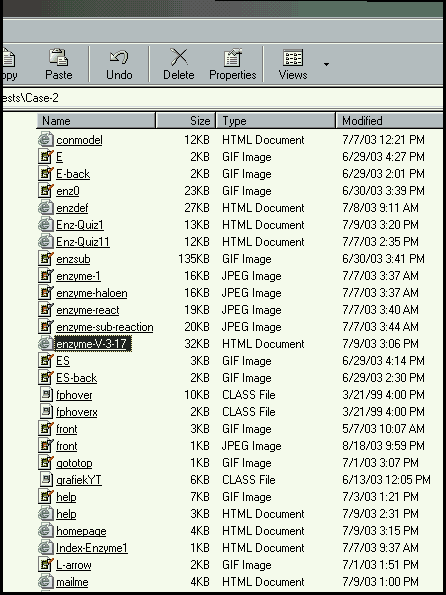
Figure 7. File structure of the Enzyme Kinetics-Animator on client desktop
The content transferring was very slow and difficult because the package has too many files.
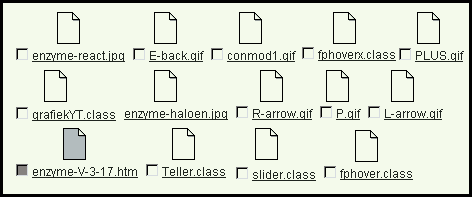
Figure 8. File structure of the Enzyme Kinetics-Animator on TeleTOP server
2.2.3 Performance of TeleTOP system on the Enzyme Kinetics package
TeleTOP is able to run the Enzyme Kinetics animator and there is a difficulty when transferring the content pieces from out to inside TeleTOP environment. Most of time you get confuse if the content has a lot of files.
2.3 Complex simulation (The Cardiovascular with SimLib library - One dimension objects) package
The complexity of the Cardiovascular Simulator is the mathematical model, which is really has high level of math computation and the interface is completely different with other simulators.
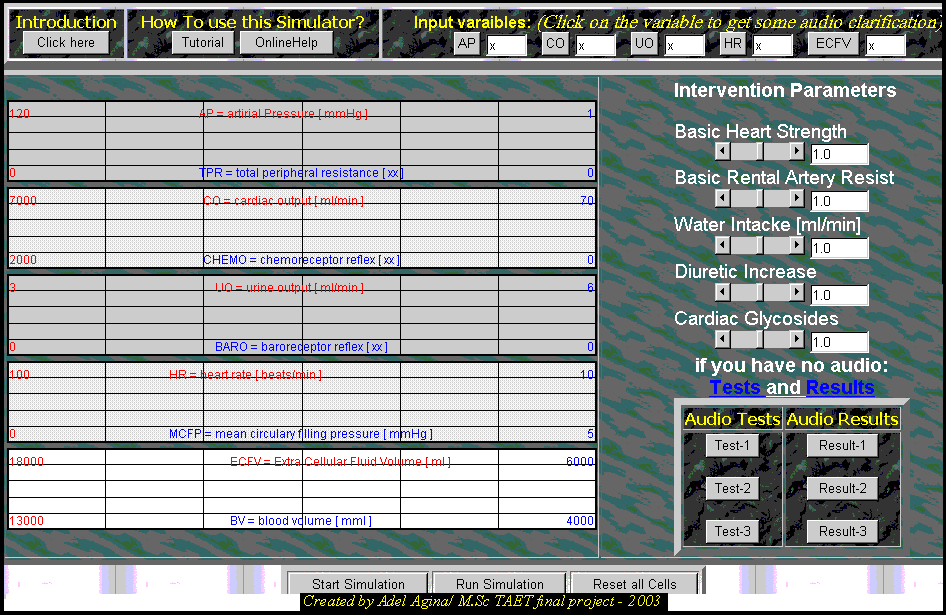
Figure 9. The Cardiovascular Simulator
2.3.1 Characteristics of the cardiovascular simulator package
What makes the content different in the Cardiovascular Simulator the audio content while the other content is the same as the previous prototypes. Java is used to prepare the applets (class files), interventions and cells, JavaScript is used to prepare the push button (Start Simulation/ Run Simulation/ Reset all Cells) and the mathematical model to control the simulation, GIF and JPG pictures are used to clarify the form of the simulator and ultimately HTML is used to hold the entire content to enable the browser display the entire website.
2.3.2 Content construction of the Cardiovascular Simulator package
The default construction consists only one dimension where all the files are placed at the same level (folder). The figure 10 clarifies the content construction OUT of the TeleTOP environment while the figure 11 clarifies the content construction INSIDE TeleTOP environment. The Cardiovascular package contains the following main files:
- HTML:
CardioBETTERie.html is the main file of the package including JavaScript math model.
- Class files:
Grafiek.class and Slider.class.
- Other files: GIF, JPG pictures and WAV files are used to create better user interface.
- Library: The package has no library (special folder that contains specific type of content) and all the content files are placed in only one folder (one layer).
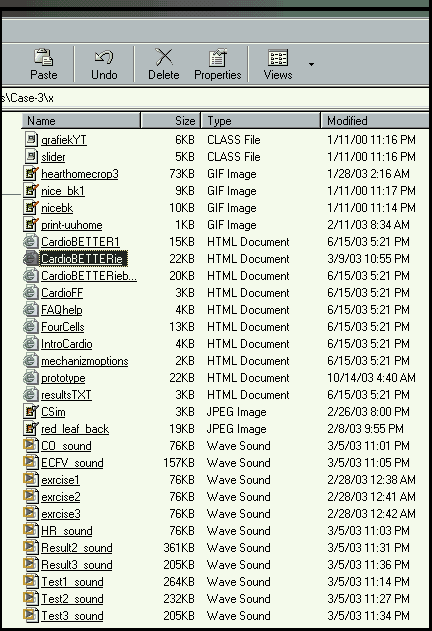
Figure 10. The File structure of the Cardiovascular System-Simulator on client desktop
The content transferring was very slow and difficult because the package has too many files.

Figure 11. The File structure of the Cardiovascular System-Simulator on TeleTOP server
2.3.3 Performance of TeleTOP system on the Cardiovascular Simulator package
TeleTOP is able to run it and there is a real difficulty when transferring the content from OUT to INSIDE TeleTOP environment. Although, this case has complex applets and a lot of math computation with audio files, the content has the same construction in both environments as shown in the figure 10 and 11.
2.4 Complex simulation (The Transistor simulator with SimLib library -Two dimension objects) package
The mathematical model and the use of SimLib are the cause behind the complexity of the Transistor-Simulator, which is already uses different type of content. SimLIB is a library of Java applets created by Rik Min and his colleagues at TO that contain a lot of Java Applets. This library is available for all students to use it in their research especially who are interested in the area of the simulation usage in education.
This prototype was prepared by group-2 as a final project in the course of simulation technology with Rik Min. Therefore, this project was chosen to avoid doubts that related to preparing all the prototypes of this research by one designer/researcher and also because this project uses SimLib already.
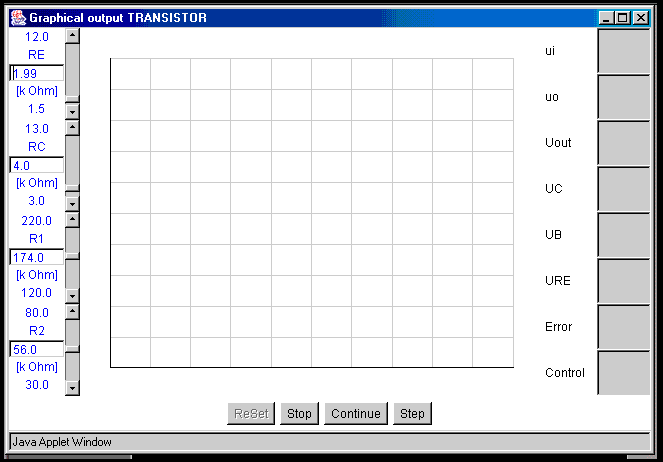
Figure 12. The Transistor Simulator
2.4.1 Characteristics of the Transistor Simulator package
Java is used to prepare the applets (SimLib), interventions, mathematical model, counters and buttons, JavaScript is used only to prepare the interface of the entire Website, GIF and JPG pictures are used to clarify the educational issue of the transistor and ultimately HTML is used to hold the entire content to enable the browser display the application.
2.4.2 Content construction of the Transistor Simulator package
The default construction consists tow dimensions where all the class files are placed in a sub-folder inside the main folder of the package. The figure 13 clarifies the content construction OUT of the TeleTOP environment while the figure 14 clarifies the content construction INSIDE TeleTOP environment. The Transistor package contains the following main files:
- HTML:
Index.html is the main file of the package including JavaScript math model.
- Class files: in library.
- Other files: GIF and JPG pictures are used to create better user interface.
- Library: The package has one library, which is SimLib. This library contains all the class files.
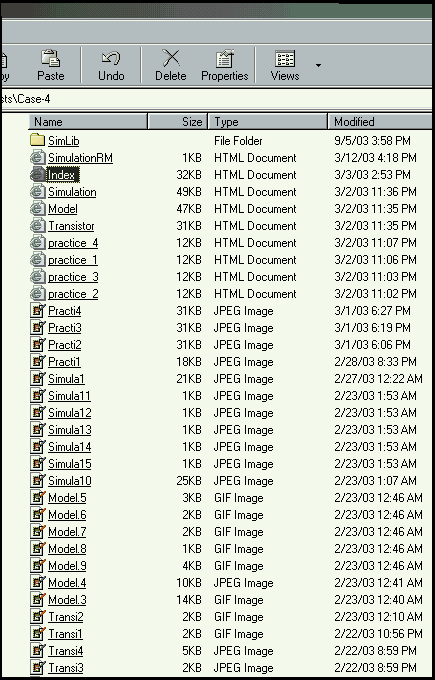
Figure 13. File structure of the Transistor-Simulator on client desktop
The content transferring was very slow and so difficult because the package has too many files and SimLib objects in a separate folder.
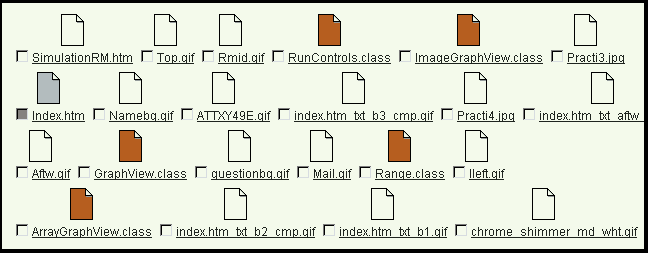
Figure 14. File structure of the Transistor-Simulator on TeleTOP server
The content construction has different structure out and inside TeleTOP environment, which means the default package structure has been damaged. The SimLib library (sub-folder) doesnít appear in the TeleTOP environment whereas its content (class files) has been transferred to the main level (folder) of the package inside TeleTOP environment. The files with red color in the figure 14 show the content of the SimLib that transferred file by file. Therefore, the content transferring was very slow and difficult because the package has too many files.
2.4.3 Performance of TeleTOP system on the Transistor Simulator package
TeleTOP is unable to run it and there is a big difficulty when transferring the content from out to inside TeleTOP environment because of the number of the content-files although this case has the same SimLib applets. The cause of that is intimately related to the content construction OUT and INSIDE of the TeleTOP environment. The construction was damaged when transferring the content pieces. As shown in the figure 13 and 14, the content of the SimLib was transferred one by one whereas the name of the subdirectory SimLib was not created before transferring, or was not transferred correctly as its. This means, the link of the Transistor Website content was damaged and TeleTOP will not be able to determine where each of piece content belongs.
2.5 Regular Web page with Photo-LIB library- two dimension objects package
Despite this test came too late, the result ensures that TeleTOP influences packagesí content and packages donít influence TeleTOP because whatever the content of the packages is, the cause of the problem is completely related to the ability of TeleTOP to keep the construction of packages content as its original construction out of TeleTOP environment. This test emphasizes that the current TeleTOP version is also has the same problem. The reason of this problem is related to the FrontPage behaviour, When you insert such item (photo, picture, etc) to the current page you work in the FrontPage will immediately creates a subdirectory and put a copy of that item in that subdirectory with random name and also creates the link to that item unless you if you already brought that item in the same directory you work in and specify the its name. The FrontPage will create the link of that item depending on its physical place.

Figure 15. The two dimensions Web page
2.5.1 Characteristics of the regular web page with two layers package
The construction of the content is completely different between OUT and INSIDE TeleTOP environment. The cause of this differ was happened when transferring content file from OUT to INSIDE TeleTOP environment. Thatís because TeleTOP is unable to keep the construction of content as its original out of TeleTOP environment. The figure 16 and 17 clarify this differ although all content files are physically replaced onto TeleTOP Archive environment.
2.5.2 Content construction of the regular web page with two layers package
The default construction consists two dimensions where all the picture files are placed in a sub-folder inside the mail folder of the package. The figure 16 clarifies the content construction OUT of the TeleTOP environment while the figure 17 clarifies the content construction INSIDE TeleTOP environment. The Web page package contains the following main files:
- HTML:
Index.html is the main file of the package. JavaScript is not used.
- Class files: no class files.
- Other files: GIF and JPG pictures are placed in library.
- Library: The package has one library, which is Photo-Lib. This library contains all the picture files.
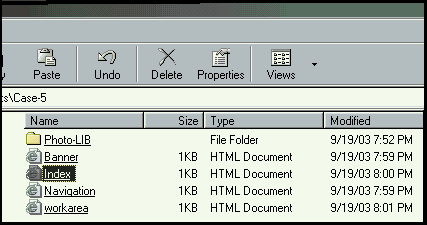
Figure 16. File structure of the two dimensions WebPage with photo-LIB on client desktop
The content transferring was very quick without difficulty because the package has no much files although there is a separate folder of Photo-LIB, which contains few pictures already.

Figure 17. File structure of the two dimensions WebPage with photo-LIB on of TeleTOP server
The content construction has different structure out and inside TeleTOP environment, which means the default package structure has been damaged. The Photo-LIB library (sub-folder) doesnít appear in the TeleTOP environment whereas its content has been transferred to the main level (folder) of the package inside TeleTOP environment. The red arrows in the figure 15 show the content of the Photo-LIB that transferred file by file. Therefore, the content transferring was very quick and easy because the content has no much files.
2.5.3 Performance of TeleTOP system on the regular web page with two layers package
TeleTOP is unable to run it although the content is very simple. This case, in fact, gives strong proof and real evidence that content doesnít influence TeleTOP whatever the content you have while TeleTOP has clear negative influence on content construction when transferring the content files from out to inside TeleTOP environment.
As shown the figure 16 and 17, the content of Photo-LIB library was successfully transferred to the TeleTOP environment but the content construction is completely damaged. This package has two layers (folder and subfolder) of content but they transferred to only one layer in TeleTOP environment and thatís the cause of why TeleTOP is unable to run this package.
2.6 Regular Web page with Photo-LIB library (One-dimension objects) package
This test is the same of the previous one without Photo-LIB where the picture was placed at the same layer of the HTML files. By other meaning, the subdirectory was removed and all the content files are in the same layer to make TeleTOP be able to reach all content files and to avoid damaging content construction inside its environment.
This case has been suggested to make sure that keeping the content construction is the intrinsic reason of the TeleTOP system malfunction when running such application.
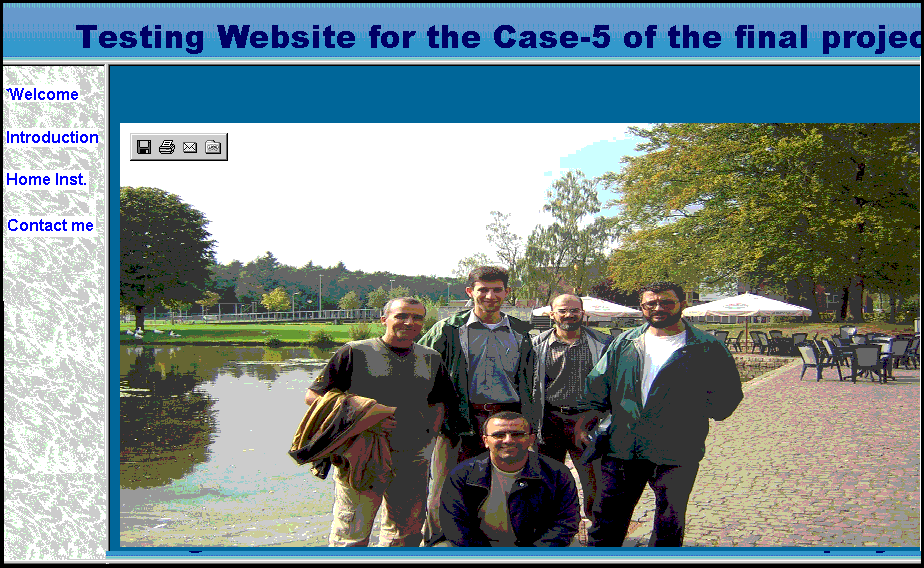
Figure 18. The one dimensions Web page
2.6.1 Characteristics of the regular web page with one layer package
The content is very simple. Its only one picture in JPG format in a separate directory (Photo-LIB) with four HTML files where the index.html is the main of the entire content. There is no any use related to Java or JavaScript.
2.6.2 Content construction of the regular web page with one layer package
The default construction consists only one dimension where all the files are placed at the same level (folder). The figure 19 clarifies the content construction OUT of the TeleTOP environment while the figure 20 clarifies the content construction INSIDE TeleTOP environment. The Web page package contains the following main files:
- HTML:
Index.html is the main file of the package. JavaScript is not used.
- Class files: no class files.
- Other files: GIF and JPG pictures are used as a part of the web page.
- Library: The package has no library. All the package files are placed in only one folder (layer).

Figure 19. File structure of the one dimensions WebPage with photo-LIB on client desktop
The content transferring was very quick without difficulty because the package has no much files.

Figure 20. File structure of the one dimensions WebPage with photo-LIB on of TeleTOP server
2.6.3 Performance of TeleTOP system on the regular web page with one layer package
TeleTOP is able to launch it although the content is the same of the previous prototype. This result, in fact, emphasize that damaging of content construction inside TeleTOP environment is the cause of the whole problem.
Chapter 3. Results
The results obtained from all the tests imply that TeleTOP has three different influences on each package depending on the number of the layers (directories). TeleTOP influence is occurred in three different directions.
The following table shows the analysis of each package content, the number of layers (folders) used to store that content, the difficulties when transferring the content pieces, the content construction out and inside TeleTOP environment and finally the final result of each test.
|
The performance and influence of TeleTOP on the package content in three different directions |
|
Package name |
Number of layers (folders) |
Package content description |
Content transferring into TeleTOP server |
Content construction on client desktop and TeleTOP server |
Content running by TeleTOP server |
|
Package (1)
Sample animation
(Tank animator) |
One layers |
Text/photos/ HTML/ JavaScript/ class files |
No difficulty |
No difference |
It works |
|
Package (2)
Complex animation with WebLib objects
(Enzyme Kinetics) |
One layers |
Text/Photos/ HTML/ JavaScript/ class files |
Difficult |
No difference |
It works |
|
Package (3)
Complex simulation with SimLib objects
(Cardiovascular system) |
One layers |
Text, photos, Audio, HTML, JavaScript, class files |
Difficult |
No difference |
It works |
|
Package (4)
Complex simulation with SimLib library (Transistor) |
Two layers |
Text, HTML, JavaScript and class files |
Difficult |
Different |
It does not work |
|
Package (5)
Regular Web page with Photo-LIB library |
Two layers |
Text and Photo only |
No difficulty |
Different |
It does not work |
|
Package (6)
Regular Web page with Photo-LIB objects |
One layers |
Text and Photo only |
No difficulty |
No difference |
It works |
Table 1. Results
The phrase "It works" in the result column means that the package gives feedback after running it inside TeleTOP environment. Itís important to mention that all the main parts of the TeleTOP environment (News, Course Info, Roster, and Archive) have been used to check all the packages to ensure that the problem has the same behaviour in all TeleTOP main parts. This will emphasize that all the other parts of TeleTOP have the same influence and will give the same results.
Both package -5 (Transistor Simulator) and package-5 (Regular WebPage with Photo-LIB library) give strong evidence that the content doesnít influence TeleTOP while TeleTOP has clearly negative influence on package content in three different related directions if the package has more than one layer.
If the package construction has one layer or more then content launching will be impossible as observed in forth and fifth prototypes (Transistor Simulator and Regular Webpage with Photo-LIB) since TeleTOP will damage the construction of content, which means the link between content parts will be also damaged.
The package content transferring is intimately depending on the size and number of the package content files since each file need to be transferred alone, which is, probably, creates confusion (the user will not be sure whether all the package files have been transferred or not).
The package running will be impossible in two cases. The first one if the package has more than one layer where TeleTOP will damage the package construction and the second if the user forgets to transfer one file or more in case the package has too many files. If the package has hundred files, for instance, some files might be forgotten to transfer into TeleTOP environment at the same time its difficult to determine the missing piece inside TeleTOP Archive environment!
3.1 TeleTOP influences the package content construction
The package content construction will completely be damaged when TeleTOP encounter the first package layer (directory / folder). TeleTOP will place all the layersí content at one layer in its environment, which clearly shows the malfunction of the TeleTOP system to keep the package construction as its original one.
3.2 TeleTOP influences the package content transferring
TeleTOP is unable to transfer all the package content at once. The package content must be transferred piece by piece (file-by-file), which is definitely creates confusing and make the transferring operation burdensome. If the package contains several layers the content transferring file-by-file will damage the default construction that means the right link between package content files will also be damaged.
3.3 TeleTOP influences the package content running
TeleTOP is definitely able to run any package that has only one layer while the malfunction will clearly appear if that package has more than one layer. Since TeleTOP has already damaged the default package construction in its environment, the default package internal content links will also be damaged. The problem is that TeleTOP is unable to rebuild those links.
3.4 The One Dimension Database problem (ODD)
The concluded problem has given the name One Database Dimension (ODD) based on what has been observed and the obtained results during the previous tests upon TeleTOP. TeleTOP uses a specific link in only one layer to run any package.
Obviously, TeleTOP deals with any package in only one layer (directory/folder), which means that all the other package layers (folder and subfolders) are invisible to the TeleTOP operating system although they are physically placed (visible) in its environment. By other meaning, TeleTOP must use a specific link (URL) at the same layer where all the package content layers must be placed together at that layer!
3.5 The 4C Model
The negative influence of TeleTOP in three different directions on the package content leads directly to think about the relation between those negative influence directions. The result of that relation was creating the following model, which has given the name 4C Model.

Figure 21. The 4C Model
3.5.1 What is the 4C Model?
Unlike 4E Model, which used to measure the flexibility in education and training, the 4C Model is expected to be a good way to measure the efficiency of TeleTOP with regard to dealing with content, which is the starring role to move TeleTOP from the current situation to be better.
Therefore, the 4C Model could be used to measure any Web Management System where the 3-C vector will show the efficiency of that application. Anyway, the 4E Model should be happy because it has new cousin and Ďheí will not stay alone anymore.
3.5.2 The mechanism of the 4C Model
The following algorithm has been suggested to clarifies the mechanism of the 4C Model on the three vectors; The Content Construction, the Content Transferring and the Content Launching:
Algorithm CheckApplicationEfficienct;
{This algorithm was written by Adel Agina to clarify the mechanism of the 4C Model}
Begin;
Do case
Case
PackageContentConstruction = NoDimensions(Layers);
If
PackageContentConstruction = lessFiles;
PackageContentTransferring = faster;
Else
PackageContentTransferring = slower;
Endif
PackageContentRunning = OK;
Case
PackageContentConstruction = OneORmoreDimensions(Layers);
PackageContentTransferring = slower and maybe impossible;
PackageContentRunning = impossible;
Endcase
EndAlgorithm;
3.6 The 4E Model
Collis and Moonen (2001) created the 4E Model to be used as a measurement to determine the flexibility in education. The 4E Model says that an individualís likelihood of making use of a technological innovation for a learning-related purpose is a function of four groups of factors:
Environment (the institutional context), Educational Effectiveness (perceived or expected), Ease of Use and Engagement (the personís personal response to technology and to change), each expressed as a vector.
The Environmental factor determines the level of the success threshold; a stronger environmental climate pushes the threshold lower so that the vector sum of the other three vectors does not have to be as high as when threshold is associated with a weaker environmental vector.
Figure 22 shows a 4E Model profile of an individual with a weak Ease of Use vector, a weak Engagement vector and a moderately positive Educational effectiveness vector. The individualís vector sum is (almost) high enough in Environment Condition 1 probably to make use of a Telematics innovation in his/her teaching. In Environmental Condition 2, the push from the Environmental vector is too weak and thus the threshold is too far away; the individual is not likely to make use of the innovation.
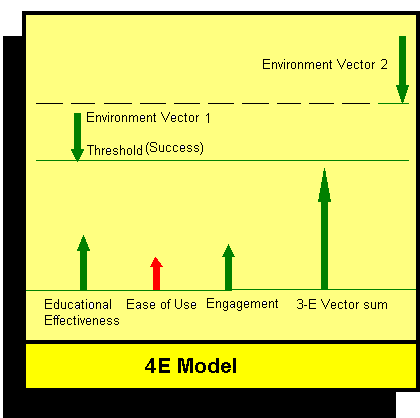
Figure 22. The 4E Model (Collis and Moonen, 2001)
3.7 The educational problem behind ODD problem
Despite, the ODD problem is intimately technical issue; the negative influence on the educational authority needs sensitive collaboration between 4C Model and 4E Model to answer the following question: To what extent and how seriously does the ODD problem affect the educational authority of the Twente University?
The Ease of Use influences the Educational Effectiveness and Engagement. Both core and complementary technologies and instructor have strong affect on the Ease of Use. The instructor is the starring role to increase the Ease of Use. So instructor, already, influences the flexibility more than any other factor. Letís go deeply to consider what are the main factors that influence the instructor to increase the flexibility in education. Instructor will be motivated/affected by two factors; financial support and the way s/he can use to accelerate course delivery to the learner. (The financial support will not be discussed in this research at all).
TeleTOP as a Web-based Course Management System is the best way to help the instructor to accelerate course delivery. If the instructor encounters the ODD problem during course delivery the negative influence will definitely appear on the Ease of Use because instructor will be frustrated. Accordingly, the instructor may decided to use another Web Management System or his own. The 4C Model will collaborate with the 4E Model to clarify the educational problem behind the ODD problem.

Figure 23. The educational problem behind ODDP problem
TeleTOP must be the standard Web-based Course Management System in the entire Twente University because the use of different Web Management Systems (or own websites) may have quite different views of Educational Effectiveness. Assume that the ODD problem is completely solved and some of instructors are still insisted to use their own websites for course delivery. In this case, those instructors have strong negative influence on the Educational Effectiveness and therefore they could be considered as technophobes in term of TeleTOP is the main technology used in the Twente University. For the education authority, the efficient use of Web Management Systems, generally, may have high priority to evaluate the organization effectiveness. Accordingly, TeleTOP may value the Twente University because its policies support the teacher to use it in the classroom.
Chapter 4. Evaluation
Evaluation is the process of determining the worth or value of something Evaluation is an important segment in this project especially there are several tests with different results that related to the influence of TeleTOP on content.
Generally, evaluation is divided into two main branches formative and summative evaluation. Ideally, the two branches are complementary to each other. The main objective of these branches is to produce the right information that helps for making design and redesign decisions as well as to improve the final product of TeleTOP.
4.1 Formative Evaluation
The formative evaluation is a method of judging the worth of a program while the program activities are forming or happening. The formative evaluation was working as the main method through each prototype to analysis the reason that already leads to create the second prototype to find out all the reasons of the ODDP problem.
4.2 Summative Evaluation
The summative evaluation is a method of judging the worth of a program at the end of the program activities. The summative evaluation was happened by collaborate with some TeleTOP experts, which were checked all the project tests on the TeleTOP environment and they considered it as a perfect and interested analysis to clarify the main cause of the current problem of TeleTOP with content process, which is actually the main aim of this research.
The test functionality of this research is already reached by achieving those tests on TeleTOP environment especially those tests were chosen carefully depending on the result of the previous test where each one of them contains different type of content. Therefore, some of those tests are projects prepared by another designers to give the final results more credibility.
In addition, all prototypes were tested on the main parts of TeleTOP environment, which are News, Course Info, Roster and Archive to make sure that all those parts have the same influence on content and give the same results. Therefore, one of those prototypes is prepared by another designers to give the obtained results more credibility.
Finally, the summative evaluation gave a good impression about this project. Some of the TeleTOP experts mentioned that, this project is a perfect and good to clarify the ODDP problem and the educational problem behind.
Chapter 5. Conclusion and Recommendations
After achieving several and different tests on TeleTOP system environment and considering the obtained results, the concluded problem has given the name One Database Dimension (ODD) problem.
The analysis of the ODD problem shows that TeleTOP influence package content when there is more than one layer (directory/folder) in the package structure. The construction of the package will be damaged when transferring it into TeleTOP environment, which means the local links of that package, will be destroyed.
The ODD problem is not related to the package itself because whatever the package content you have, TeleTOP is able to upload it in any place in its environment (News, Course Info, Roster and Archive) while whether TeleTOP will be able to run that package is completely depending on the package construction inside TeleTOP which is really very sensitive problem.
The other sub-problem that might be happened is related to the package content transferring into TeleTOP environment if the package has huge number of files. The user may get confusing to transfer all files of the application since s/he must submit only one file at a time.
TeleTOP has only One-Database-Dimension process that compels it to deal with any package via only one layer (directory/folder), which means that all the other package content in the other layers (subfolders) actually are invisible to the TeleTOP system although they are physically replaced (visible) in its environment. By other meaning, TeleTOP must use a specific link (URL) at one layer where all the package content dimensions must be placed together at that layer, which is make the package running impossible.
The 4C Model collaborated with 4E Model to explore the educational problem behind, which is related to the use of different Web Management System with TeleTOP at the same organization. TeleTOP system must become the standard Web-based Course Management System for all instructors in the Twente University to increase the educational effectiveness and the Ease of Use.
Finally, all the conclusion of this project could be considered in the 4C Model, which is clearly shows the technical problem and itís directions as well as the educational problem behind. The first direction related to the content file structure, the second direction related to the content transferring from out to inside TeleTOP environment and the third direction is related to the content running in TeleTOP environment.
Recommendations
I highly and strongly recommend considering all the directions of the ODD problem and achieving the same tests on TeleTOP system after solving the ODDP problem.
It might be not a problem to use ZIP software tool to transfer the package content at once but it must be tested whether it works or not since TeleTOP considers the link (URL) in only one layer.
Therefore, the test will be better if the package consists of several layers (subdirectories) to ensure that the ODD problem is completely and successfully solved.
In addition, the educational problem behind must also be taken into account and consideration because instructor is the main factor that influences the Ease of Use. Instructors must be motivated to start replacing their own content in TeleTOP environment.
In addition, the goal is not only to solve the ODD problem but also to give TeleTOP the ability to be deployed, widely used and survived due the fact that one instructor may value the whole organization.
References
Dinkel Institute, Twente University, (1997-2002) The digital learning TeleTOP environment. (Online) available: http://www.teletop.nl/index_uk.htm
Darrel, I. (2001). Dictionary of the Internet. Oxford University Press. Published in USA by Oxford University Press INC, New York.
Collis, B. & Moonen, J. (2001).
Flexible Learning in A digital world: experience and expectation. Biddles Ltd, UK.
Min, R. (2002).
Designing Dynamical Learning Environments for Simulation: Micro-Worlds & Applets on the World Wide Web. (Online) available:
http://projects.edte.utwente.nl/pi/Papers/AbstractErfurt.htm
Dodge, B. (1996). Distance Learning on the World Wide Web. (Online) available:
http://edweb.sdsu.edu/people/bdodge/ctptg/ctptg.html
iCDL group (2003). What is distance learning. International Centre for Distance Learning, The Open University, UK. (Online) available:
http://www.distance-learning.co.uk/whatis/watframe.htm
Agina, A. (2003). Final project of Simulation Technology Course, University of Twente (Online) available: http://to-ww.to.utwente.nl/TO/ism/course/sim/AAgina/CARDIFF.htm
Group-2. (2003). Final project of Simulation Technology Course, University of Twente (Online) available: http://to-www.to.utwente.nl/TO/ism/course/sim/Transistor/index.htm
Agina, A. (2003). Final project of Animation Technology Course, TO/University of Twente
On the web: juni 2004.






















